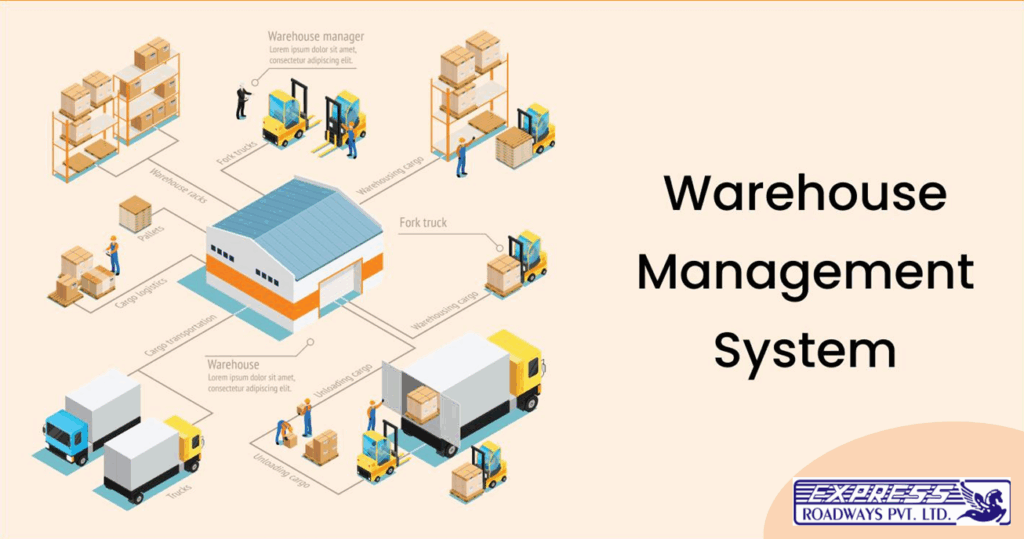
In the fast-paced world of logistics and supply chain management, technology continues to evolve rapidly. As we step into 2025, Warehouse Management Systems (WMS) are becoming smarter, more adaptable, and deeply integrated with modern business needs. These systems are no longer just about inventory control—they’re central to a company’s operational efficiency and customer satisfaction. In this article, we explore the key Warehouse Management System trends that are shaping the industry in 2025 and beyond.
1. AI-Powered Decision Making
Artificial Intelligence (AI) is no longer a futuristic concept; it’s becoming an everyday part of warehouse operations. In 2025, WMS platforms are increasingly integrating AI to enable smarter decision-making. Whether it’s demand forecasting, picking route optimization, or predictive maintenance, AI algorithms are helping warehouses minimize errors and maximize efficiency.
AI also assists in real-time inventory tracking, reducing overstocking and stockouts. By analyzing historical data and predicting future needs, warehouse managers can plan better and reduce waste.
2. Integration with Robotics and Automation
One of the most visible WMS trends in 2025 is the rise of warehouse automation. Robotics—such as Automated Guided Vehicles (AGVs), robotic arms, and autonomous mobile robots—are working hand-in-hand with WMS platforms to streamline picking, packing, and sorting processes.
These integrations help reduce labor costs, improve speed, and increase order accuracy. The WMS not only coordinates robotic activity but also ensures that human workers and robots collaborate safely and effectively.
3. Cloud-Based WMS Platforms
As businesses demand more scalability and flexibility, cloud-based WMS platforms are becoming the norm. These systems allow real-time access from anywhere, enabling better collaboration across multiple warehouses or partners.
In 2025, more companies are moving away from legacy on-premise systems and opting for cloud-based solutions due to their lower upfront costs, automatic updates, and easier integration with other software systems like ERP, CRM, and e-commerce platforms.
Also Read: The Rise of Robotics in Indian Warehouses: Transforming the Future of Logistics
4. Enhanced Data Analytics and Reporting
Data is the new oil—and in 2025, WMS platforms are drilling deep into analytics to uncover actionable insights. Advanced reporting tools now allow warehouse managers to track KPIs like order fulfillment rates, average picking times, and inventory turnover in real time.
Custom dashboards and AI-driven insights make it easier to identify bottlenecks and opportunities for improvement. This kind of transparency is crucial for making informed decisions and maintaining a competitive edge.
5. Sustainability and Green Warehousing
As global supply chains aim to reduce their environmental impact, Warehouse Management System trends in 2025 include a strong emphasis on sustainability. WMS platforms now incorporate features that help companies track their energy usage, reduce packaging waste, and optimize transportation routes to cut down emissions.
Many systems also support returnable packaging and reusable containers, helping businesses meet regulatory requirements and customer expectations for greener operations.
6. IoT Integration for Real-Time Monitoring
The Internet of Things (IoT) is playing a significant role in transforming WMS capabilities. Smart sensors, RFID tags, and connected devices offer real-time visibility into every aspect of warehouse operations—from temperature and humidity monitoring to asset tracking and equipment performance.
In 2025, IoT integration with WMS enables predictive maintenance, minimizes equipment downtime, and ensures optimal storage conditions, especially for perishable goods or sensitive materials.
7. Mobile-Friendly Interfaces and Wearable Tech
Mobility is another key focus area in modern WMS solutions. Mobile-friendly interfaces allow warehouse staff to access the system through smartphones or tablets, improving responsiveness and reducing errors.
In addition, wearable technology—such as smart glasses, barcode-scanning gloves, and voice-picking headsets—is being adopted widely to enhance worker productivity and minimize manual entry. These devices work seamlessly with WMS platforms to offer hands-free operation and real-time data synchronization.
8. Cybersecurity and Data Protection
With the growing digitization of warehouses, cybersecurity has become more critical than ever. WMS platforms in 2025 come equipped with robust security features, including multi-factor authentication, encryption, and real-time threat detection.
Companies must ensure their WMS complies with data protection regulations and protects sensitive customer and business data from cyber threats. Trust and security are now integral to a successful warehouse operation.
9. Customization and Modular Architecture
Every business has unique needs, and WMS platforms are adapting with customizable, modular architectures. This trend allows companies to implement only the features they need and scale up later without overhauling their entire system.
In 2025, WMS providers are focusing on creating user-friendly, highly configurable systems that can be tailored to industry-specific workflows—whether it’s e-commerce, pharmaceuticals, or food and beverage.
10. Seamless Integration with 3PL Services
Finally, as more companies partner with third-party logistics providers, seamless integration between WMS platforms and 3PL systems is becoming a top priority. These integrations ensure that order data, inventory levels, and shipping updates are synchronized across platforms for smooth and efficient operations.
For businesses looking to scale or enter new markets, working with experienced 3PL logistics companies in Bangalore can offer significant advantages. These providers often bring advanced WMS capabilities, automation, and strategic warehousing solutions that help businesses optimize their supply chains while staying agile.
Conclusion
As we move through 2025, Warehouse Management System trends are being shaped by technological innovation, sustainability goals, and the growing need for agility. AI, automation, cloud computing, IoT, and cybersecurity are no longer optional—they’re essential components of a modern, efficient warehouse.
Businesses that adopt these WMS trends will be better equipped to respond to market changes, delight their customers, and drive long-term growth. Whether you manage your own warehouse or partner with 3PL logistics companies in Bangalore, staying ahead of these trends will be key to your success in the evolving logistics landscape.